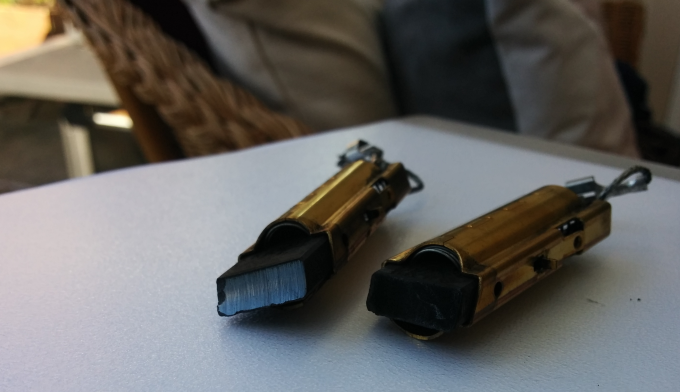
If you search the internet for “miele washing machine f53” you may get an answer saying that this means the speed sensor, motor, or PCB are faulty. As these together comprise almost half of the machine, you would have to dispose of it and purchase a new machine. I even found one chap unhelpfully quoting it back to a questioner and getting shown that he’d found it via Google. There may be a simple issue which doesn’t involve such drastic maintenance: if the symptoms of your “F53 Technical Error” on your Miele machine include some of the below then consider looking at the carbon brushes on the motor.
- the machine is a number of years old
- the F53 occurs at the point in the cycle when the drum would start to rotate
- no maintenance has been done on the motor
- the machine is relatively well used, say 2-3 loads per day
These brushes are a part that is expected to wear and when they do the motor cannot rotate the drum, which leads the speed sensor to think something is wrong and show the error. The photo attached shows the brushes from our machine and you’ll notice that one is shiny while the other is rough. The rough one wore out some time back while the other kept going, then it also reached the limit of the backing spring and could not contact the armature. No contact = no electricity = no motor movement.
We decided to take a chance and ordered replacement parts rather than the full motor, and having found a good Youtube video explaining how these were fitted we undertook the job ourselves. We didn’t even take the motor out of the body as it is accessible by removing the front panel. Once done correctly the motor whirred into life and we’re back washing. A win for DIY and a little hard work.

Thank you for this great explanation on the F53 fault and the motor brushes.
Hi, just wanted to say this was a nice writeup. I had the same problem and also replaced my machine’s brushes. As yours did, it went right back to work, but a few months later another F53 error stopped it again. Motor and tach sensor were just fine though. The problem in this 2nd F53 event was in the control board, which I finally tracked down to a relay module (DPDT) – that controlled the motors spin direction, and which had gone bad. Running the U6 test for the motor revealed that it would spin in one direction, but sat idle when trying to spin the opposite direction.
I believe that as the original brushes wore out, they caused arching in the relay contacts and caused it to fail early. Replacing this relay with a new one fixed the washer yet one more time and we are back in business.
I think I have the same problem as you describe. Can you please give me guidance regarding replacing the faulty relay?
Hi Alexander,
what machine do you fixed and can you please send me details about the relay (board location)?
Thank you.
Joerg
Hi, I saw your note about changing the relay on your washer…. are you able to tell me how to locate it?
Cheers
HI , i opened up my miele pw 5065 and it has no brushes, but same error F53. the motor is brushless, so am unsure what the problem is
Thank you for your help . An engineer has told me that my drum needs replacing at a cost of £600, I have just put up with the extra noise , but now it’s saying fault f53 ? The machine is 12 years old and had t ons of use . Should I just buy a new one ?
We recently had another occurrence of the F53 error in our washing machine and replacing the brushes did not fix it. While a new PCB may have helped (and there are services available online who will fix the old one for you) we decided on a new Miele machine. There comes a point of diminishing returns in fixing older equipment and to me a new drum sounds like major repair. Replacement of a large percentage of the machine may mean that you can get it to work, but inevitably you still have an old machine. We also noticed a better smell with our new one!